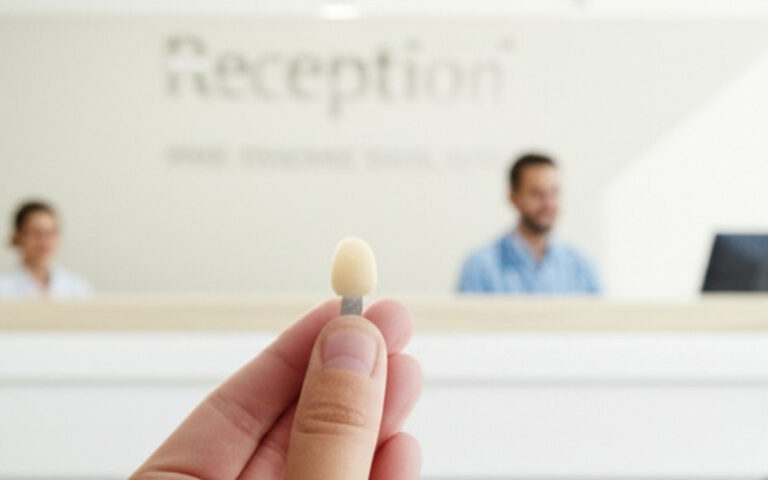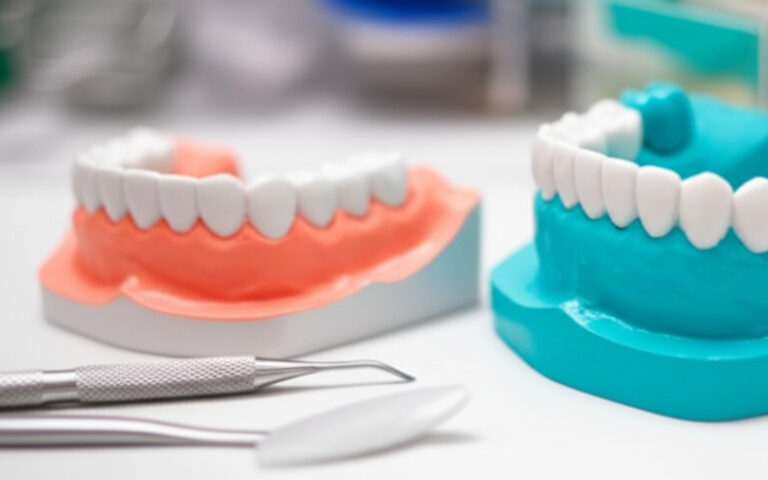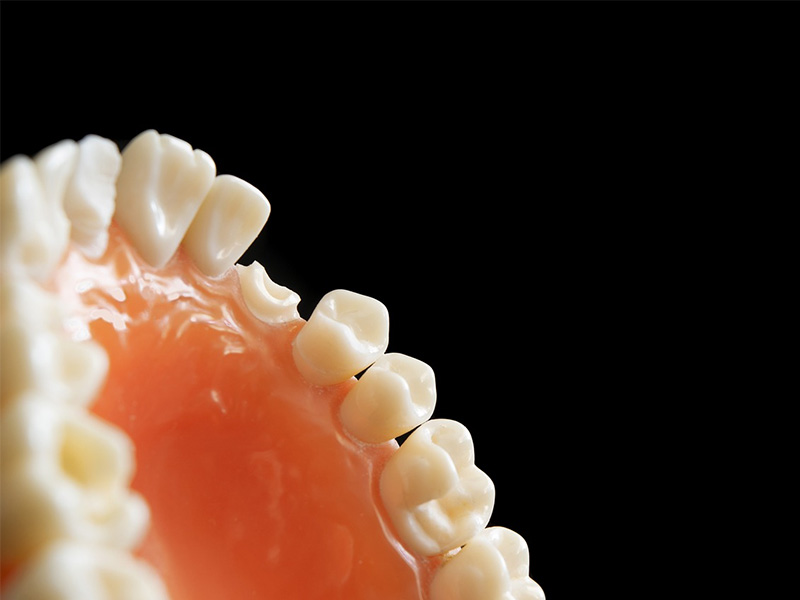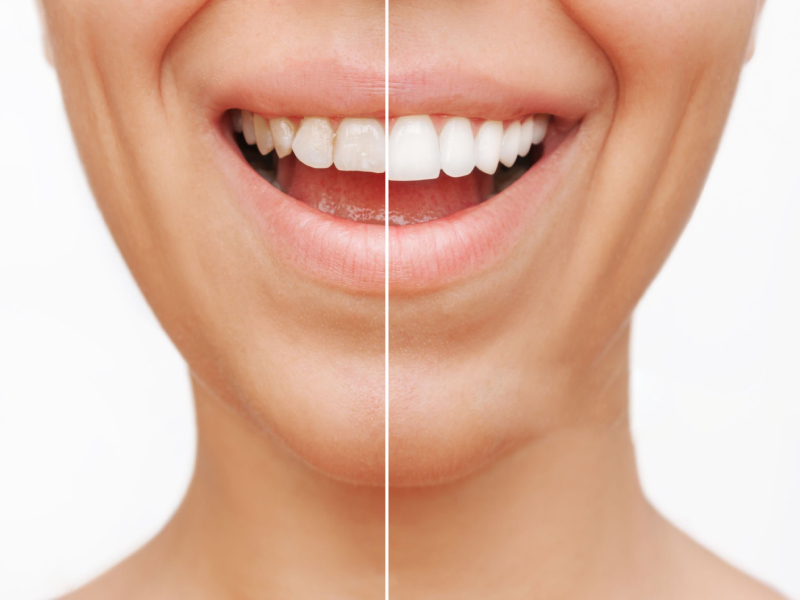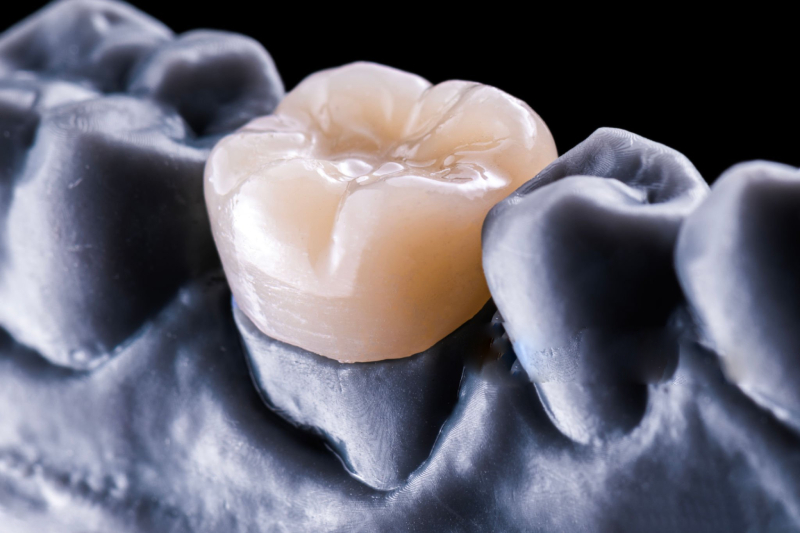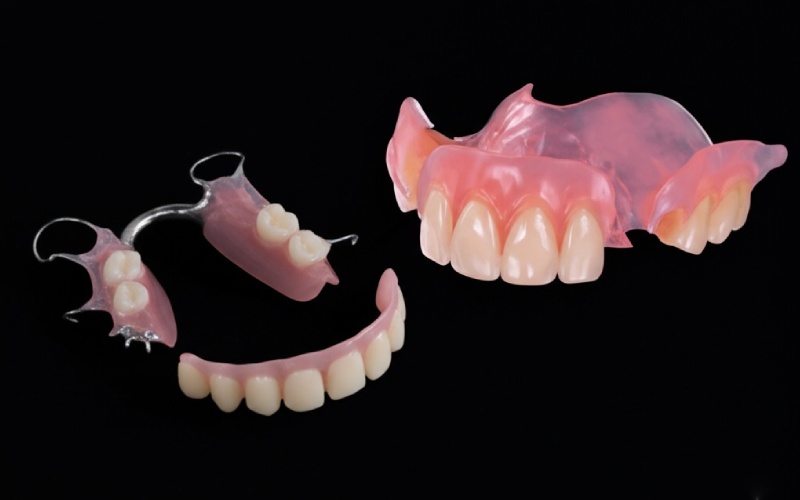
Duraflex vs. Valplast: Picking the Best Flexible Partial Denture for Your Smile
If you’re looking at ways to replace missing teeth you’ve probably heard about flexible partial dentures. They’re a big step up from the stiff old partials with metal clips. But then things can get confusing. Your dentist might bring up brand names like Duraflex and Valplast and you’re left wondering: what’s the difference? And which one is really better?
That’s a completely good question. Picking a dental piece is a big deal and it affects how you feel every day. You’re not just buying a product; you’re making a choice for your smile and your health.
Think of it like picking the right running shoes. Two top brands might both look good and promise to work well but they use different materials and designs. One might be better for running on trails and the other for road marathons. The “best” shoe is all about you.
The same idea works here. Both Duraflex and Valplast are fantastic top-notch materials but they have their own pros and cons. This guide will explain it all in simple terms. We’ll compare them side-by-side explain the science without the confusing words and help you have a good talk with your dentist about which one is the perfect fit for your smile.
Table of Contents
A Good Look at Duraflex Flexible Partial Dentures
First up is Duraflex a common choice in dental labs today. When you think of Duraflex think new clean and tough. It’s a newer kind of material made to fix some of the old problems with dentures.
What Is Duraflex Really?
Basically Duraflex is made from a polyolefin thermoplastic resin. That sounds tricky but here’s an easy way to think about it: imagine high-quality flexible plastics used for medical parts or fancy food containers. They are known for being very stable pure and good at keeping moisture out.
This is a big difference from other materials. Because Duraflex is a polyolefin it’s really good at keeping water out. Why is that important? Materials that soak up water can become places for germs to grow and they get stained more easily. Duraflex’s ability to block moisture helps it stay cleaner clearer and less smelly over its life.
The Main Benefits of Duraflex
Patients and dentists often pick Duraflex for a few great reasons.
- Better Looks and Stain Resistance: This is Duraflex’s superpower. The material is really clear and can be polished to a super-smooth shiny finish. This means it not only looks great at first but also resists stains from coffee tea and wine really well. If you’ve ever been annoyed with a dental piece that gets dull or changes color Duraflex is a great choice.
- Super Flexible and Comfortable: Like all flexible partials Duraflex is thin light and has no metal. It bends with your mouth for a comfy fit and you don’t have the stiff feeling or metal clips of old-school partials. It feels less like a big appliance and more like a normal part of your mouth.
- Allergy-Friendly: This is a huge deal for more and more people. Old-fashioned acrylic dentures have a chemical called a monomer which can cause allergies in some people. Duraflex has no monomer and it’s also BPA-free. For anyone with skin or material allergies it’s one of the safest choices out there.
- Tough and Hard to Break: Don’t let the word “flexible” fool you because this material is strong. It can take a big hit so it’s not likely to break if you drop it by accident. It’s made to handle the pressure of daily chewing and use.
The Downsides of Duraflex
No material is perfect and it’s good to know the downsides. The main problem with Duraflex—and it shares this one with Valplast—is fixing it.
- Hard to Fix or Adjust: Materials like Duraflex can’t be easily fixed or changed in the dentist’s office. If a clasp breaks or you need to add another tooth to it later it’s often impossible. In most cases you have to get a whole new one. Adjusting the fit as your gums change is also very hard and needs special work at the lab if it can be done at all.
- Cost: As a more expensive material Duraflex partials usually cost more than regular acrylic or metal ones. However they are often cheaper than options that last forever like dental implants or bridges.
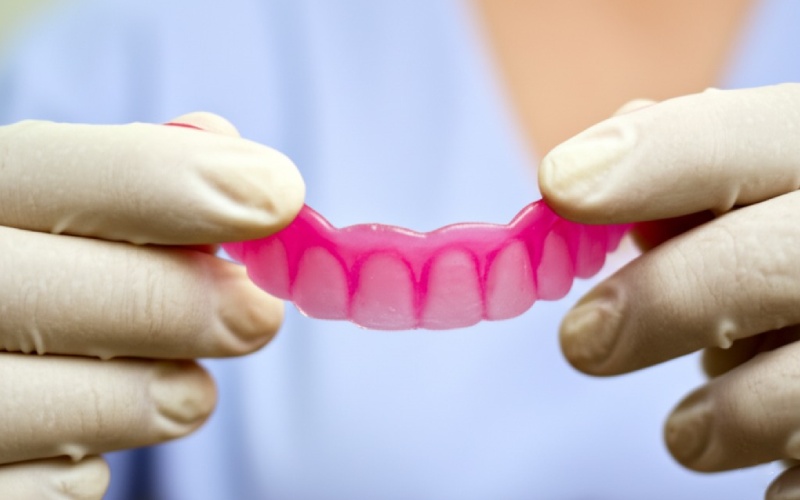
Taking a Look at Valplast Flexible Partial Dentures
Now let’s talk about the most well-known name in flexible partials: Valplast. If Duraflex is the new kid on the block Valplast is the one that’s been trusted for years. It’s been used for over 50 years and it has a long history of making beautiful working smiles.
What Is Valplast Exactly?
Valplast is made from a polyamide thermoplastic resin which is a fancy way of saying it’s a very strong and flexible kind of nylon. Think about the difference between a brittle plastic box and a bendy tough-as-nails zip tie—that’s the kind of tough but bendy feel that nylon has.
This nylon base lets Valplast be made into very thin detailed shapes that fit snugly and comfortably around your teeth and gums. Its flexibility is what it’s famous for and it allows the partial to grip parts of the tooth that stiff materials can’t. This gives it a great hold without any metal clips.
The Main Benefits of Valplast
Valplast is popular because it gives patients a mix of features they love.
- Great Looks and Blending: Valplast is famous for looking natural. The material is see-through so the natural color of your gums shows through. This makes the denture base almost invisible in your mouth. Its clasps aren’t metal; they are thin pink finger-like parts of the denture itself. These “gum-colored clasps” are what Valplast is known for and they make it a top choice for replacing front teeth where looks are the most important thing.
- Comfort and a Good Fit: Valplast is light and flexible so it’s very comfortable. It fits great with the way your mouth moves and changes shape. Patients often say they forget they are even wearing it. The way it bends lets it stay in place so you can feel confident when you eat and talk.
- Safe for Allergies: Just like Duraflex Valplast has no monomer so it is a great choice for people with acrylic allergies. Valplast International trusts its material so much that it gives a lifetime guarantee against breakage for the denture base. This is proof of how tough and safe it is.
- Very Strong: That flexible nylon isn’t just for comfort because it’s super tough. Valplast partials are guaranteed not to break with normal use so they are a dependable long-term choice.
The Downsides of Valplast
Valplast’s downsides are very much like Duraflex’s and are a problem with most flexible materials.
- Hard to Fix or Add To: Just like Duraflex Valplast is very hard to repair reline or add teeth to. This is the biggest downside for its amazing flexibility and looks. If your teeth change you’ll probably need a new partial.
- Can Get Stained: While it looks beautiful the nylon in Valplast can soak up a bit more water than the material in Duraflex. This means if you don’t clean it really well it can get stained from dark drinks over time. You have to clean it right every day to keep it looking good.
- Can Get Stiffer Over Time: Some people say that after a few years the nylon can feel a little stiffer than when it was new. It still works fine but it might lose some of its original “snap.”
Duraflex vs. Valplast: Putting Them Head-to-Head
So how do they really compare? There’s no single “winner.” The “best” one is the one that matches what you need and what you care about. Let’s look at them feature by feature.
The Showdown: A Feature-by-Feature Look
| Feature | Duraflex (Polyolefin) | Valplast (Nylon) | The Bottom Line |
|---|---|---|---|
| Looks | Very clear and easy to polish. Resists stains very well. | See-through material blends in. Gum-colored clasps are almost invisible. | It’s a tie but for different reasons. Duraflex is better at fighting stains long-term. Valplast is better at hiding the clasps. |
| Comfort & Fit | Very thin light and flexible. Fits well. | Very thin light and flexible. Hugs your mouth for a snug fit. | It’s a tie. Both are way more comfortable than stiff partials. You might feel a small difference but both are great here. |
| Strength | Very strong and hard to break. | Very strong and guaranteed not to break. | It’s a tie. Both materials are super tough and made to last. You can’t go wrong with either one for strength. |
| Stain Resistance | Winner. It’s better at keeping water out so it’s better at resisting stains from coffee tea and red wine. | Good but you have to clean it well to stop stains from building up over time. | If you drink a lot of coffee and hate stains Duraflex has the edge. |
| Repairability | Big Problem. Can’t be fixed or have teeth added. | Big Problem. Can’t be fixed or have teeth added. | This is the biggest problem for both. If you think you’ll need changes to your denture soon you should talk to your dentist about other options. |
| Allergy-Friendly | Excellent. No monomer and BPA-free. Great for allergies. | Excellent. No monomer and proven safe for decades. | A tie. Both are great choices for anyone who is sensitive to acrylic or metal. |
| Cost | Mid-to-High price. | Mid-to-High price. | It’s a tie. The cost is usually about the same and depends more on your dentist and where you live than the material itself. |

Things to Think About When You Choose Your Flexible Partial
Now that you know the little differences how do you choose? Sit down and think about what’s most important to you. Talk about these points with your dentist to pick the right one for you.
1. How Many Teeth are Missing and Where? Are you replacing front teeth where appearance is everything? Valplast’s hidden clasps might be the best choice for you. Are you replacing back teeth where you bite harder and stains are less of a worry? The strength of either one is great but Duraflex’s stain resistance might be a nice bonus.
2. What Do You Care About Most in Terms of Looks? Be honest. Are you more worried about the clasps showing when you smile or are you more worried about your partial looking stained after a year?
- Worried about seeing clasps? Go with Valplast.
- Worried about stains over time? Go with Duraflex.
3. Your Budget The prices for Duraflex and Valplast are often close but it’s always smart to ask for the cost of both if your dentist can get them. They cost more than basic acrylic partials but less than implants. See if you can afford them.
4. Your Habits Do you grind your teeth at night? This is very important info for your dentist. They need to design the partial to handle that extra pressure. Also how well you plan to clean it makes a difference.
5. How Well You’ll Take Care of It If you are good at cleaning your partial every day with the right products either material will be great. If you know you might be a little forgetful the better stain resistance of Duraflex could be a big plus.
6. Your Dentist’s Advice and Experience This might be the most important factor. Your dentist and their dental lab have probably worked with these materials for years. They might like one more than the other based on what they’ve seen work best. Ask them which material they trust more and why. A well-made partial from a dentist who’s an expert with one material is better than a poorly made one from a material they don’t use much.
How to Care for Your Flexible Partial
No matter which one you pick you have to take good care of it. This protects what you paid for and keeps your mouth healthy.
- Clean It Daily: Clean your partial every day to get food and plaque off. Use a soft denture brush.
- Use the Right Cleaners: Don’t use regular toothpaste because it’s rough and can scratch the surface. Scratches make it easier for stains and germs to stick. Ask your dentist about cleaners like Val-Clean or TCS Dental Appliance Cleaner.
- Rinse After You Eat: When you can take out and rinse your partial after meals to wash off food bits.
- Soak It Daily: Soaking your partial in the right cleaner helps keep it clean and fresh.
- NEVER Use Hot Water: This is so important. Hot or boiling water can bend the material out of shape and ruin the fit. Always use cool or warm water.
- See Your Dentist Often: Take your partial with you to every dental check-up. Your dentist will check how it fits and can get it professionally cleaned for you.
The Healthy Takeaway: Making a Smart Choice with Your Dentist
Choosing between Duraflex and Valplast doesn’t have to be confusing. Now you know there isn’t one “best” material—only the best one for you.
Let’s go over the main points:
- Both are great. Duraflex and Valplast are top-quality comfortable good-looking and tough choices compared to old-school partials.
- Looks vs. Stains: Valplast’s biggest plus is its nearly invisible gum-colored clasps. Duraflex’s biggest plus is its great stain resistance and shiny finish.
- The Big Downside: The main downside for BOTH materials is that they are very hard or impossible to fix reline or add teeth to.
- You’re the Key: Your own needs habits and what you care about will help you make the choice.
You now know enough to walk into your dentist’s office not as someone who just listens but as part of the team. Talk about these points ask questions and listen to their expert advice. Together you can choose the option that will give you a healthy confident and comfortable smile for years to come.

